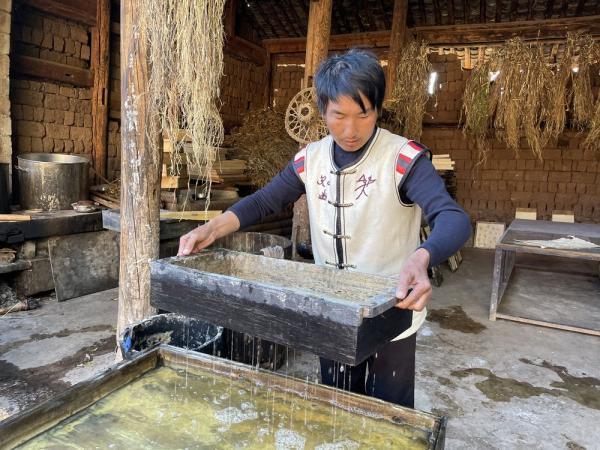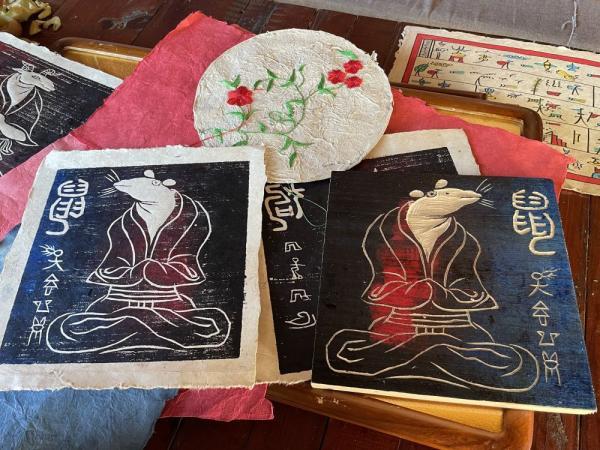Dongba paper: A piece full of cultural implications
The video clip by the Paper shows He Xiuhong's mother helps in preparing the bark.
"We need to bring to life all collections in our museums, all heritage structures across our lands and all records in our classics. In this way, the Chinese civilization, together with the rich and colorful civilizations created by the people of other countries, will provide mankind with the right cultural guidance and strong motivation."
——Xi Jinping, President of the People's Republic of China
Dongba paper: A piece full of cultural implications
At the Xiuhong Dongba paper-making mill in northwest Yunnan’s Lijiang City, He Xiuhong, inheritor of the Dongba paper-making craft of the Naxi ethnic group, and his wife Wang Zhengqiong were pouring the boiled bark liquid into a wooden mortar. Then, the husband operated the nearby pestle weighing tens of kilograms with his foot, while the wife stayed at the mortar to adjust the amount of bark and liquid in it. The pair coordinated well in crushing the boiled bark, and such operation was repeated several times. Once kicked off, their hard labor would last for several hours.

“To make an authentic piece of the traditional Dongba paper, pounding the materials is just one of the steps,” said He Xiuhong, smiling. Beginning with material gathering, there are around ten strict steps to follow in the paper making. It is such steps that made the paper worm-proof, water-proof and enduring, that is, remaining intact for millennium.
Made by hand from canescent wikstroemia, the Naxi paper was used for recording the Dongba scripture, and it is thus famed in northwest Yunnan. The Dongba paper-making craft has been inscribed on the list of the national intangible cultural heritages (first batch).

In 2004, He Xiuhong returned home to start making the Dongba paper, inheriting the craft left by his forefathers. He founded the Xiuhong mill specializing in making and selling the Dongba paper. In practicing the ancient method of paper making, Xiuhong got through frequent failures, but he never thought of giving up. “If you are in the right mood and take it with great care, everything will be finished perfectly,” said He. Since he is serious about his trade, He improved the paper quality step by step, winning praises from the peers.
He Xiuhong did not simply inherit the ancient craft. While abiding by tradition, he tried constant innovation, so that the Dongba paper could be better accepted. Getting inspired at an exhibition, the couple thought of fusing embroidery into the Dongba paper. The wife Wang Zhengqiong is good at embroidery, and taking the paper as a cloth piece, they rendered the bright embroidery patterns onto the traditional Dongba pieces. Such practice made a breakthrough for it showed the durability of the paper and mixed the traditional paper-making with the embroidery art.

These days, He Xiuhong is trying to put together woodcut, wax dyeing and Dongba paper, in a bid to further promote the paper by using other intangible heritages. While creating the cultural products of the Dongba paper to the best of his ability, He also visited local schools to let pupils know about the craft. “I hope the traditional Dongba paper could be passed down from generation to generation,” said He.
Reporting by Meng Jia and Zeng Wei (Xinhua); Trans-editing by Wang Shixue